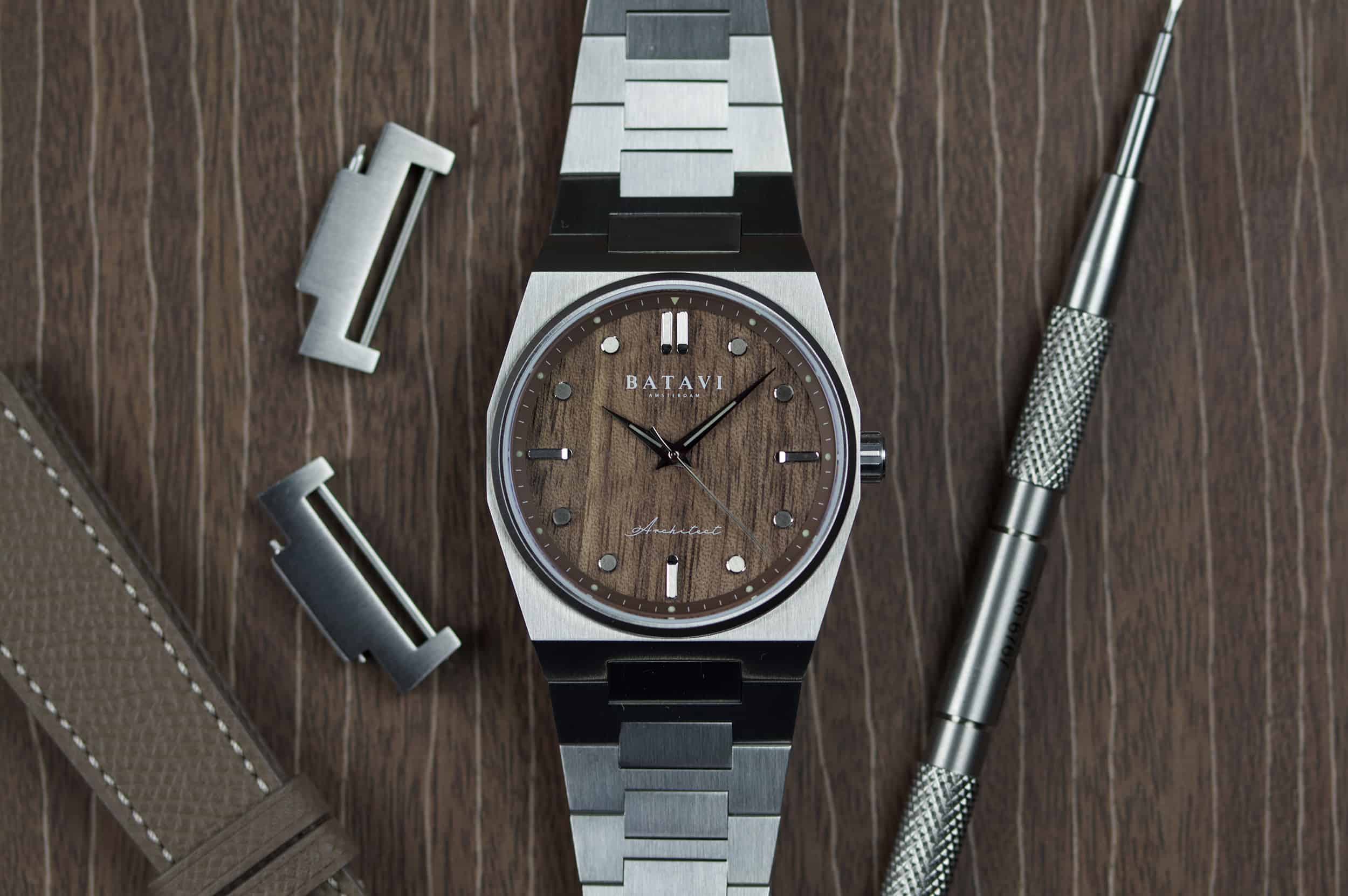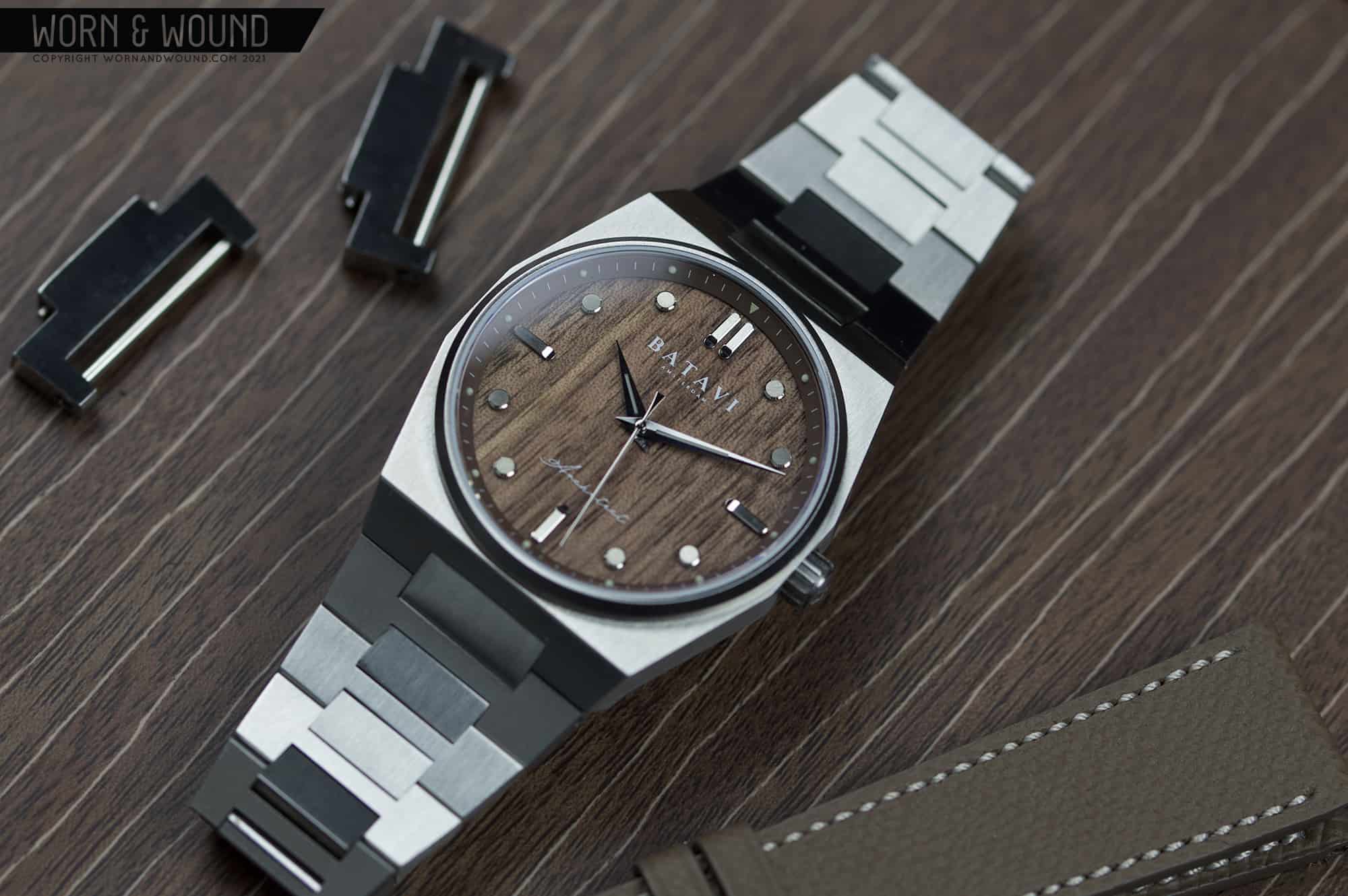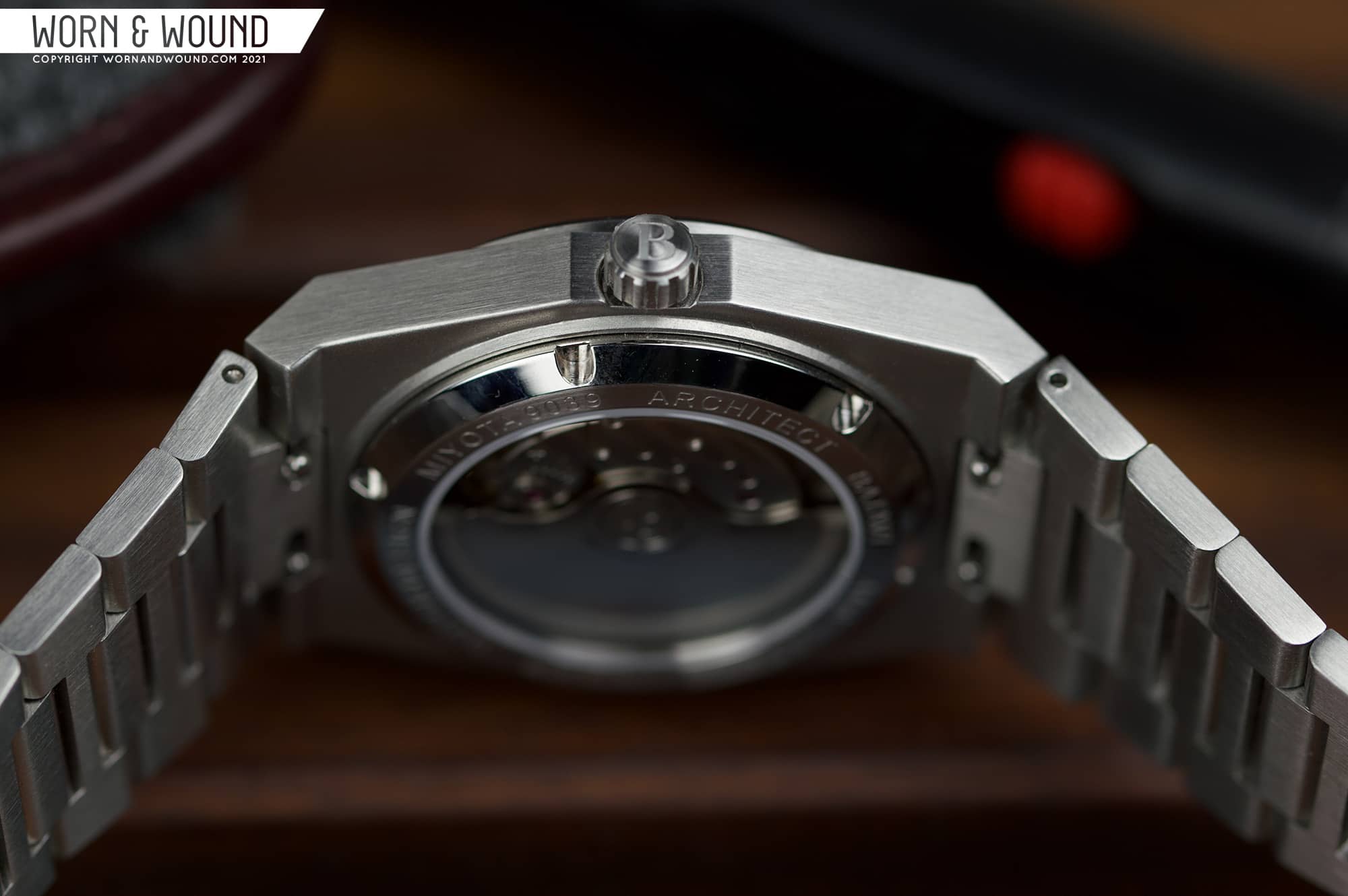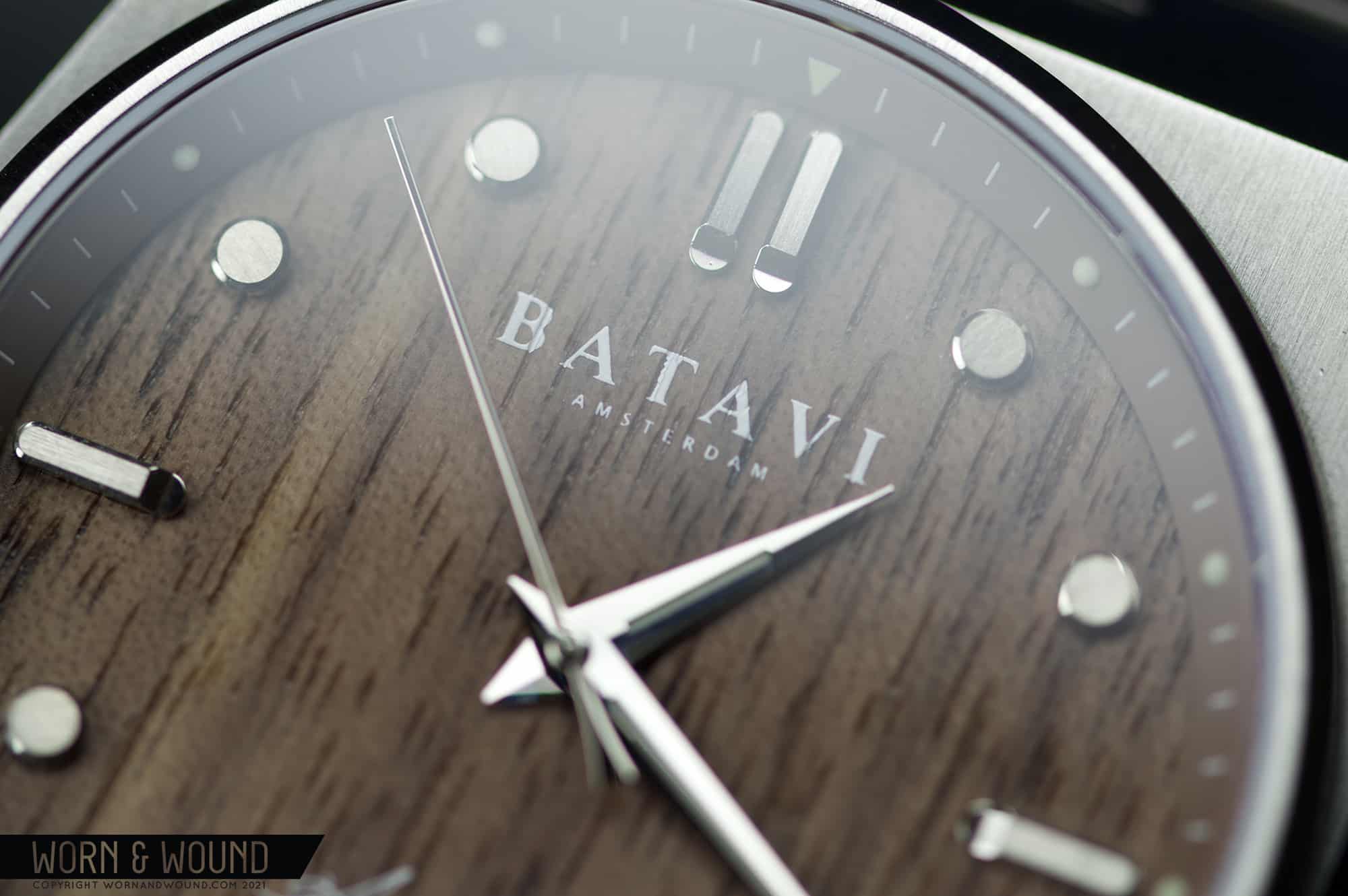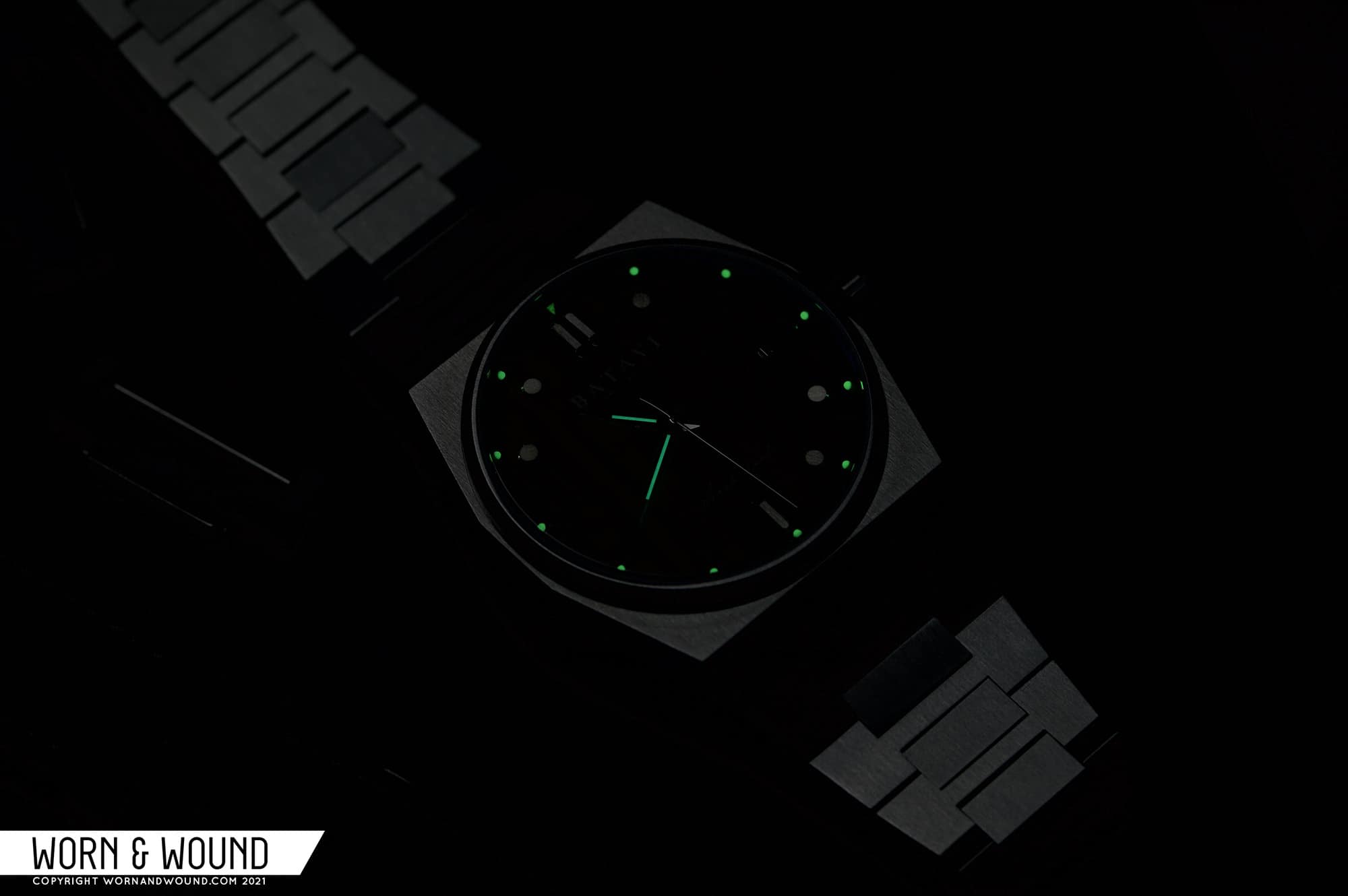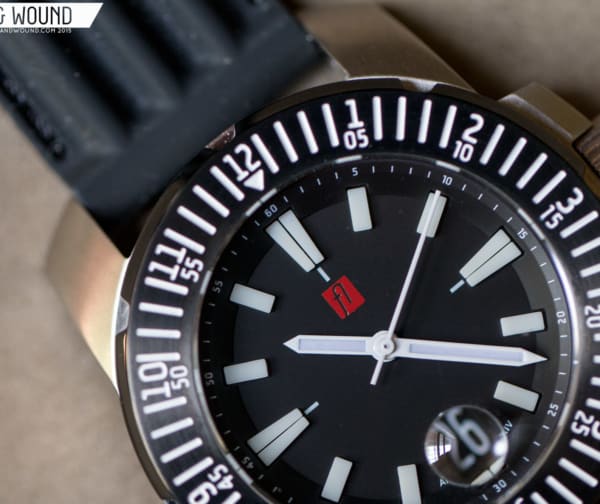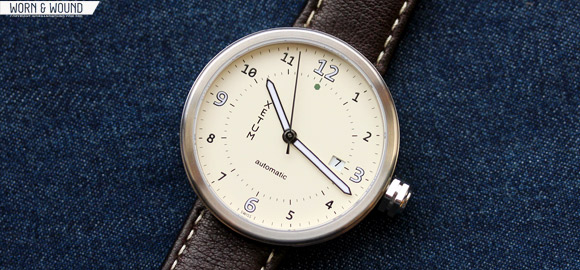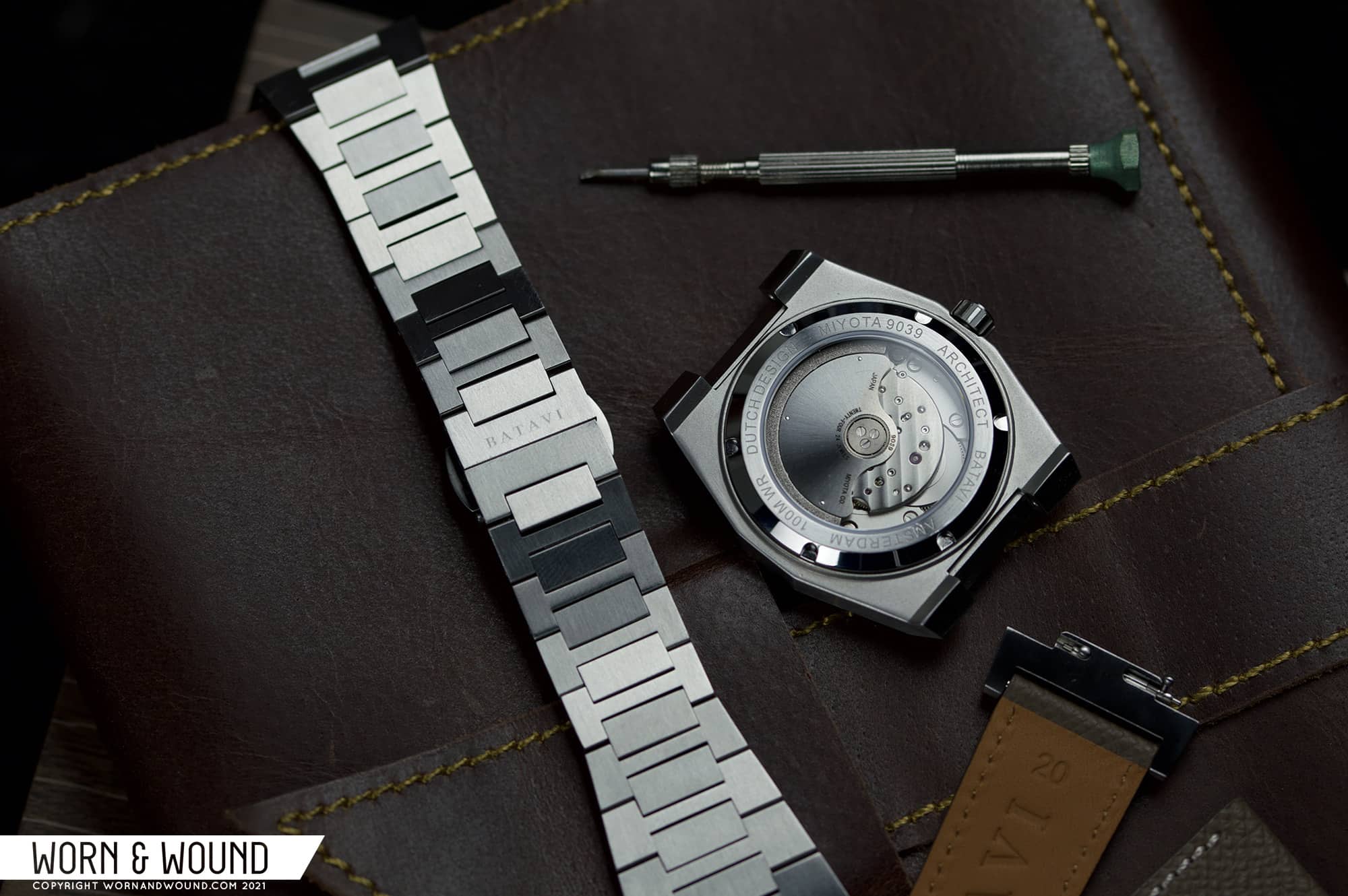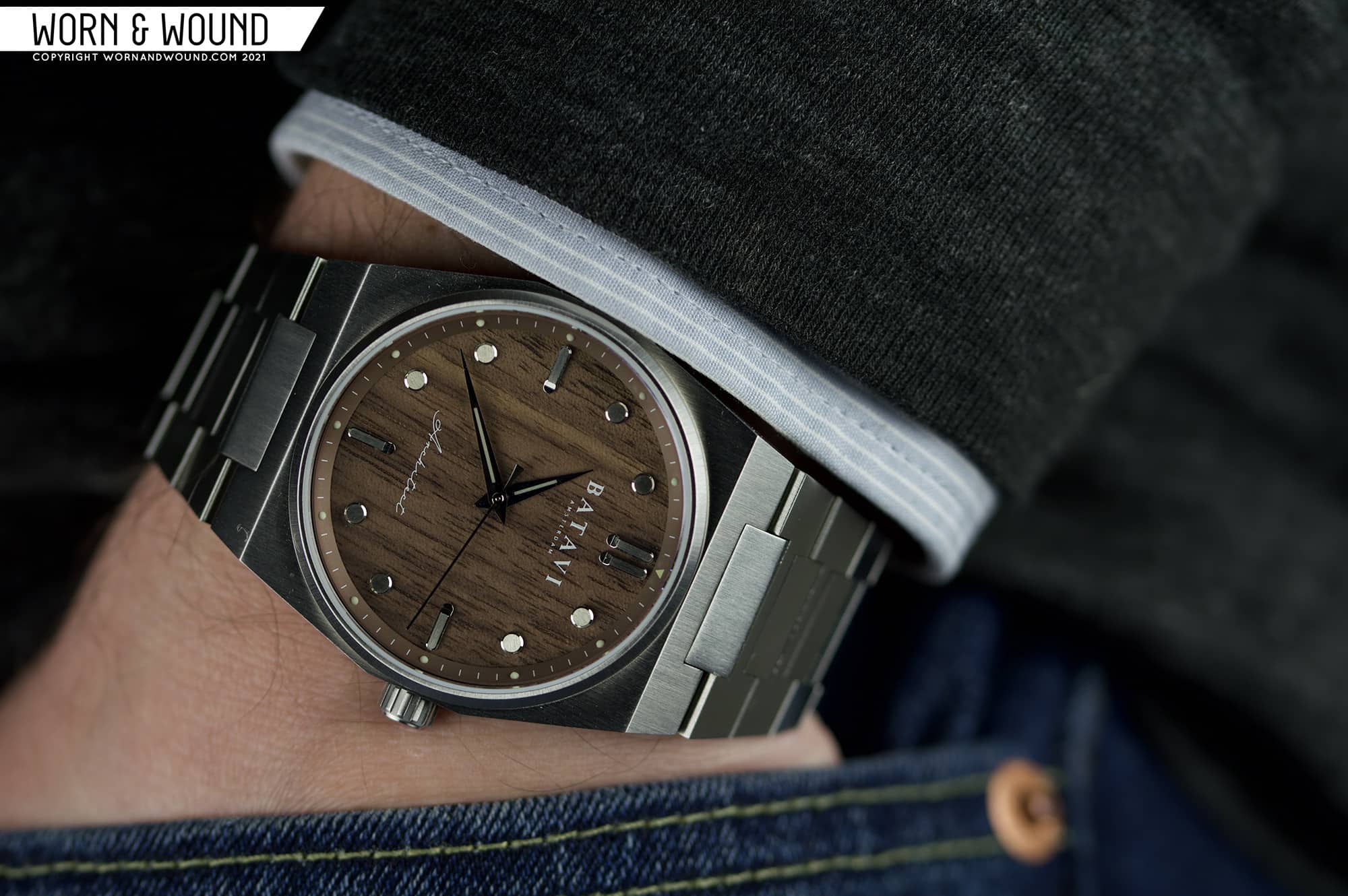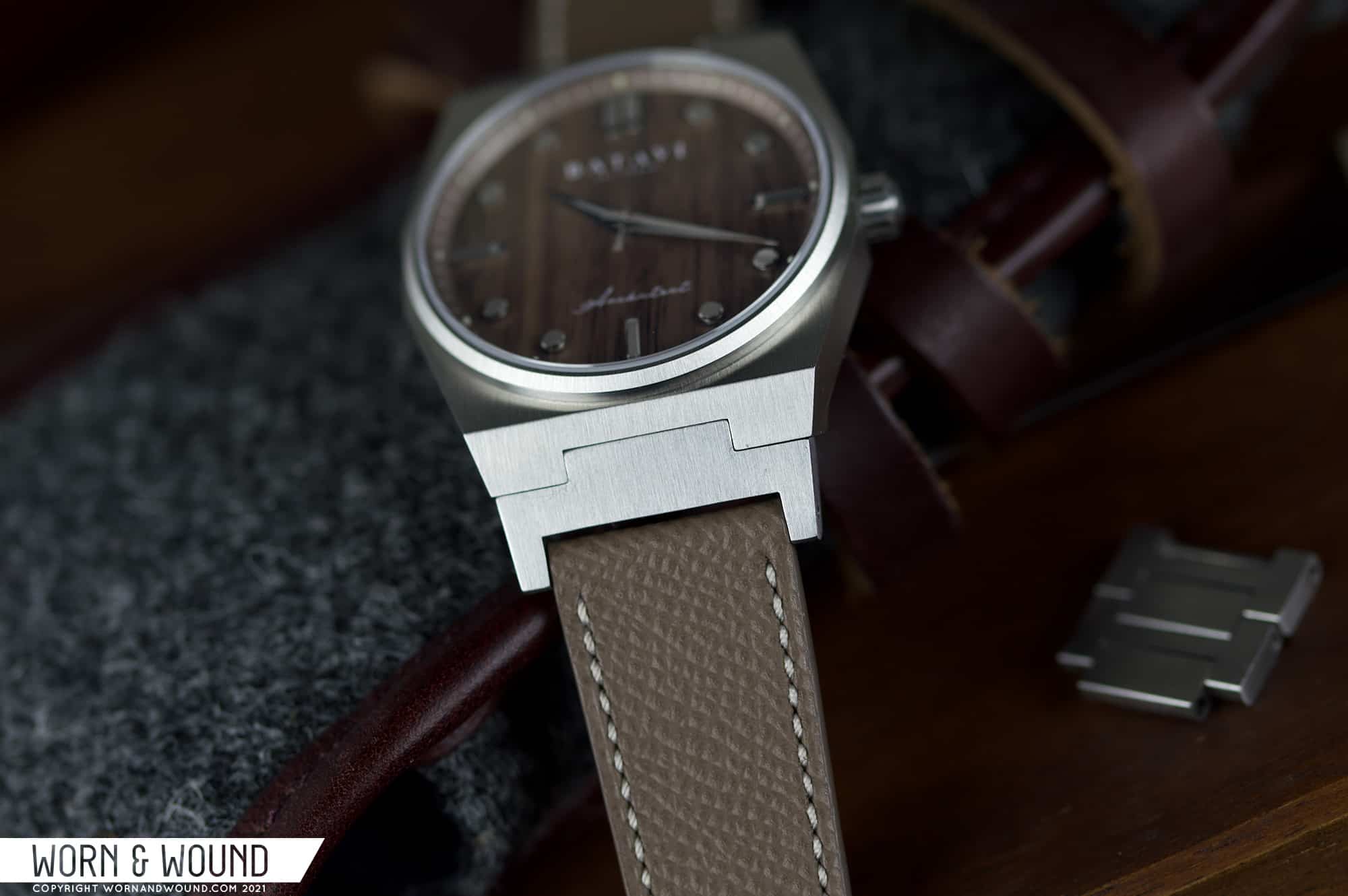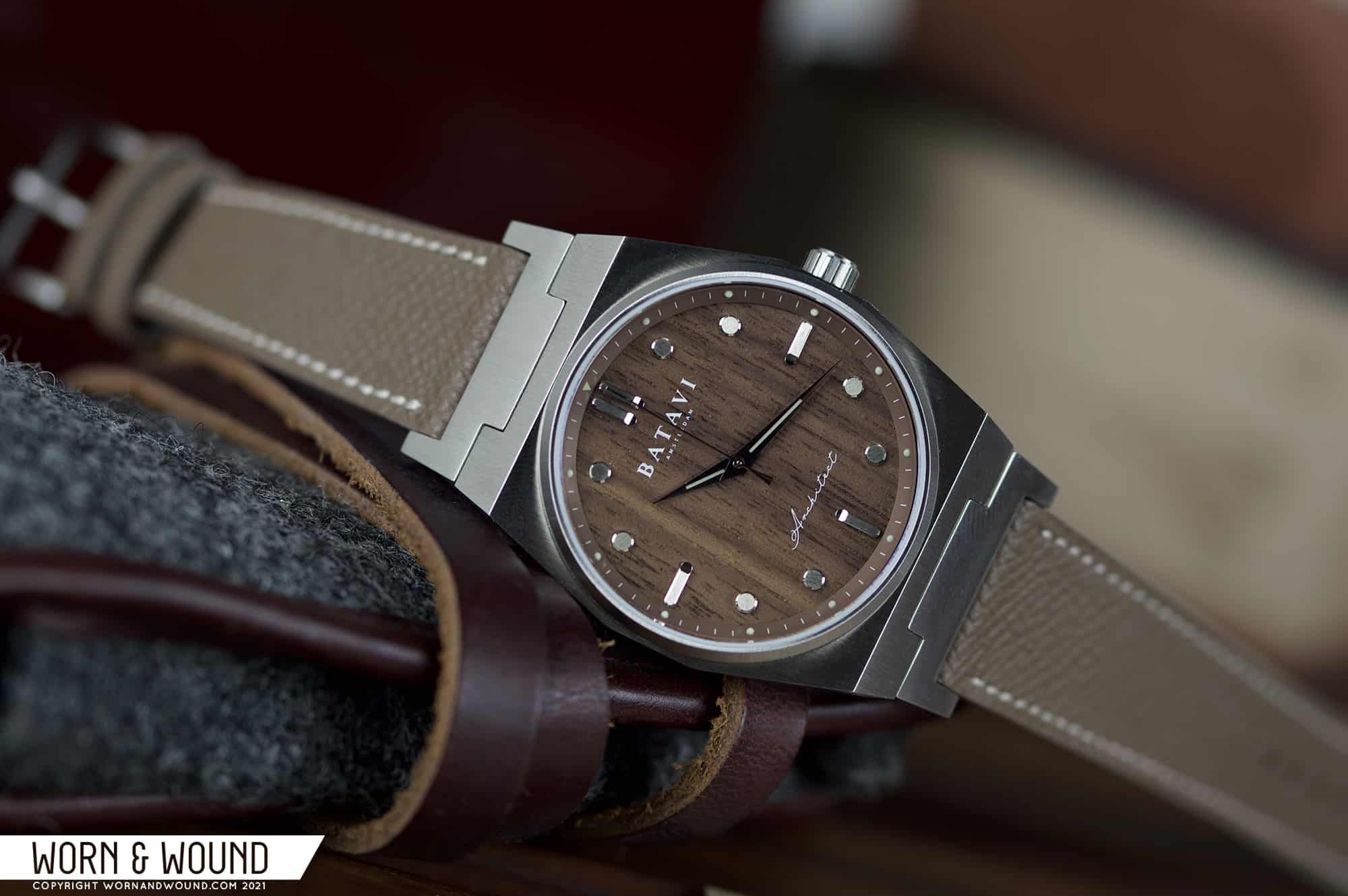I can’t recall seeing a watch like this in person before. I’ve seen wooden watches – where the case and bracelet are also wooden, usually fitted with a cheap quartz movement and sold for novelty value alone. There’s also the ‘Teak’ dial of the Omega Aqua Terra line which takes its moniker from the mimicking of a yacht’s Teak decking. A quick Google also shows dials of glorious polished wood in several pieces from Universal Geneve, Movado/Zenith and of course Rolex. These were mostly produced in the 1960s and 1970s and—as gorgeous as they are—look very much of that era. Even those watches are fairly uncommon and there’s no recent trend towards a re-emergence of that look.
On its own, the Walnut dial of the Batavi seems strange. As part of the new Architect series it makes a little more sense. Three dials representing the building materials Copper, Steel and Wood are each housed in the same sporty and angular stainless steel case. I find the Walnut variant to be the most unusual of the three, so that’s what I’m looking at today.









 Featured Videos
Featured Videos




